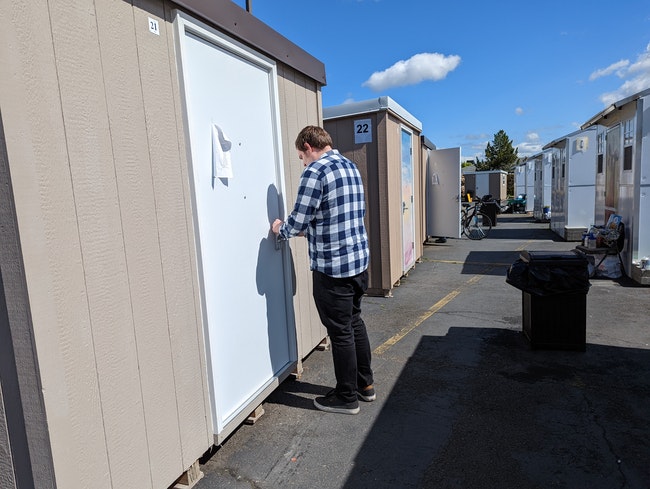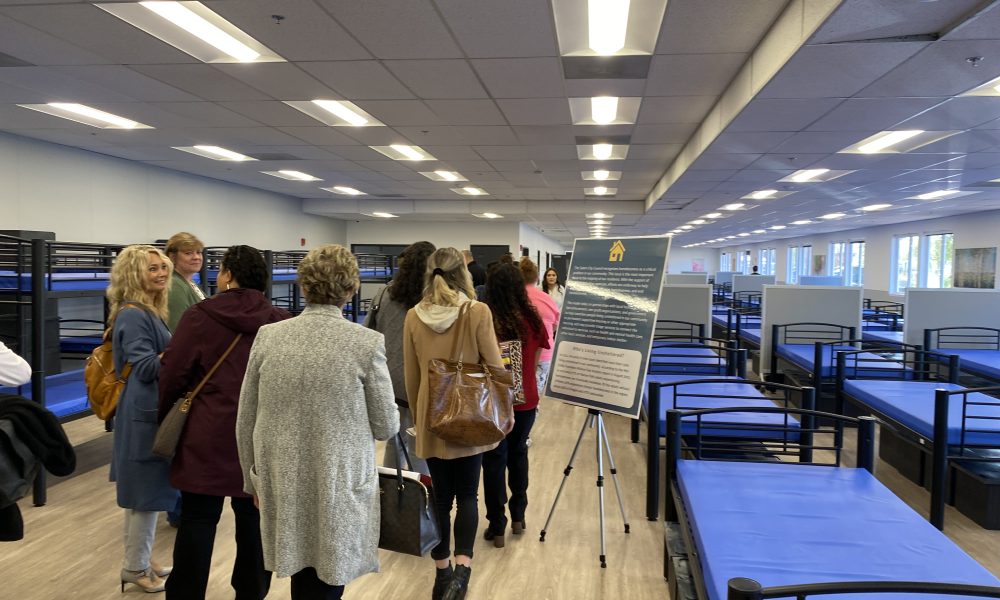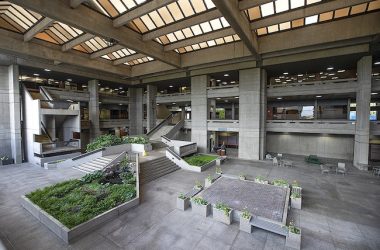Local jurisdictions are still in the process of spending a combined hundreds of millions of dollars in federal Covid funding on projects ranging from new water system infrastructure to daycare centers.
The city of Salem, and Marion and Polk counties were required to report the usage of the funds to the federal government earlier this year. Those reports showed exactly how those federal dollars are being used.
Marion County allocated much of its money to water, sewer and broadband system upgrades in smaller communities.
The city spent the bulk of its funding on revenue replacement that went toward salaries and raises for the police and fire departments. Revenue replacement is a process where governments use grants, stimulus dollars or other types of financial aid to replace lost income or revenue caused by unforeseen circumstances such as a pandemic.
Homeless shelters also received a significant portion of city funds.
Polk County has already spent the majority of its funding on a variety of projects including a new $4.1 million community outreach facility in Monmouth, and an upgrade of its jail and emergency communications system.
Local municipalities are required to file quarterly reports with the U.S. Department of the Treasury which outlined how each spent federal Covid relief money allotted in 2021 as part of the American Rescue Plan Act.
Salem Reporter requested the most recent reports from the city of Salem and Marion and Polk counties.
By law, local governments can spend the money until Dec. 31, 2026, though it must be allocated this year.
The city of Salem spent its full allotment of $34 million by June 30, 2023.
Marion County has spent about 32% of its $67 million. Most of the remaining money is earmarked for water, sewer and broadband infrastructure.
Polk County received nearly $17 million and has logged $15 million in total spending as of June 2024.
City of Salem — $34 million
Homeless shelters and navigation center — $10 million
The city of Salem spent a significant portion of the federal dollars on homelessness services, affordable housing and related projects.
That included $2.7 million in startup costs for the Navigation Center, a low-barrier shelter intended to help chronically homeless people get into housing and find stability. Marion County gave the city another $3 million dollars for the project out of the county’s federal Covid relief money, which brought the total spending to $5.7 million. The costs included the building acquisition, construction costs, project management and engineering.
The center, which is operated by ARCHES, is meant to assist in the city’s response to the homelessness crisis, the city’s report said. The center connects people with public benefits, health services and permanent housing and also provides toilets and a place to rest indoors.

“A State of Oregon shelter study identified the need for a navigation center in our region,” the city’s report said. “Navigation centers are low-barrier shelters, which means to encourage use, the shelter may allow couples or family units to stay together. Covid-19 increased risk of homelessness due to reduced access to social services and increased economic hardships.”
A recent report showed that after the first year of operation, the city’s navigation center was able to help about half of shelter residents find permanent housing between June 2023 and May 2024. The report found that on average, people left the navigation center within four months.
Other major expenditures included $4 million for the Church at the Park transitional housing programs, which include the program’s micro shelter, and safe parking programs in Salem. Those programs are continuing to operate in Salem with state money.

The city also spent $230,000 to convert a local motel into a shelter for domestic violence victims run by the Center for Hope and Safety. It’s called the Mosaic shelter and is in northeast Salem.
Finally, the city spent $2.2 million of Covid relief money on land in West Salem that will allow for the construction of a new road, Marine Drive. The road project will also receive money from the infrastructure package Salem voters approved in 2022. The city-owned land will eventually be developed into housing, said Kristin Retherford, community planning and development director.

City operations — $24 million
The city also used $24 million to help make up for a calculated $46.6 million in lost revenue during the pandemic. Of that, $16 million went to the city’s general fund, $1.6 million to the transportation fund, $3.2 million for the cultural and tourism fund and $2.6 million to the utility fund.
That money ultimately went to support police department salaries and overtime for fiscal year 2022 and 2023, and for fire department salaries for fiscal year 2022. Police got $18.4 million and the fire department got $5.6 million, city records showed.
“While both the fire and the police departments experienced increased salary and overtime costs due to impacts of Covid-19, the primary driver of how these funds were allocated was in efforts to support general city operating costs, especially as the city was determining how to address the growing budget concerns in the general fund,” Josh Eggleston, the city’s chief financial officer, said in an email.
Marion County – $68 million
Marion County received a total of $67.5 million from the federal government through ARPA. So far, $22 million has been spent, according to a county tracking page online. The rest is budgeted for future projects.
“The county has allocated the funding and completed multiple projects. For some of the projects, the spend will increase significantly with time,” county spokesman Jon Heynen said in an email. “For example, we invested some of the money into wastewater projects, and those timelines from planning to construction can take time, with construction being the bulk of the cost.”

Infrastructure — $26.5 million budgeted, $4.4 million spent
The county allocated 39% of its funding, or $26.5 million, to water, sewer and broadband infrastructure projects in smaller Marion County cities.
The county allotted $1 million each to the cities of Gates, Mill City, Sublimity, Aumsville, Aurora, Donald, Gervais, Hubbard and St. Paul, for water system infrastructure upgrades.
Jefferson and Mt. Angel each received $450,000 for water system infrastructure, and Stayton got $500,000 to construct a 30-foot sanitary pipe.
The city of Turner was awarded $200,000 for a lower water booster pump station, and $450,000 for a new storm drain to alleviate flooding.
The Brooks Community Service District got $9.8 million to construct a new well-based water supply, storage and distribution system. The district also got $5 million to expand an existing sewer plant to provide the processing capacity needed to accommodate the increased sewer flow and concentration of an expanded waste collection system, including the construction of a pump station, manholes and new gravity and pressure main connections.
The Fargo Interchange Service District got $600,000 for the service district’s portion of the city of Donald’s wastewater treatment plant expansion project.
City and nonprofit projects — $7.7 million budgeted, $6.2 million spent
Marion County allocated $7.7 million in funding for a number of city and nonprofit projects to help alleviate the negative economic impacts from the pandemic. So far, the county has spent $6.2 million.
The county allocated $3 million to the city of Salem for its navigation center, and $2 million to the city of Keizer to build two all-weather recreational sport athletic fields at Keizer Rapids Park for Keizer, Salem and Marion County residents. Salem has already used 100% of the funding for the navigation center and the Keizer project is about 53% completed.

The city of Silverton received $250,000 to purchase a building to be used as a resource center to help unhoused people in the community transition into permanent housing. So far, about $54,000 has been spent.
The county also spent $250,000 on the renovation of Catholic Community Services of the Mid-Willamette Valley’s Bishop Steiner building, $285,000 for the Hope Pregnancy Clinic in Salem to add an annex for its parenting initiative, $250,000 for the Liberty House for medical services to address a pandemic increase in child maltreatment cases and $750,000 to provide food assistance through the nonprofit Marion Polk Food Share.
The KROC Center received $125,000 to offset revenue loss sustained in April 2020 due to the pandemic shutdown and loss of membership dollars, and the Salem YMCA used $125,000 to reimburse youth development staffing costs, youth sports costs and rent associated with school sites from between Sept. 1, 2021 and May 25, 2022.
The nonprofit Isaac’s Room used $250,000 to offset revenue loss sustained during the pandemic and to expand youth program activities.
Public safety and health — $11 million budgeted, $2.8 million spent
Marion County set aside about $11 million for public health and safety-related expenditures, and so far has spent roughly $3 million.
That includes $790,000 on costs associated with isolation and quarantine leave due to the pandemic as directed by the public health authority. It spent 100% of those funds.

Nine million dollars will be used for emergency radio communications through the construction of a new radio system and broadband network to facilitate emergency communication needs for the Marion County Sheriff’s Office, eight city police departments, nineteen fire districts, two rural ambulance districts and the Marion County rural 911 call center. So far the county has spent 16% of those funds, or $1.4 million.
Santiam Memorial Hospital in Stayton received $1 million to upgrade its emergency power supply system in the hospital’s emergency room. So far $473,000, or 47% of funds have been spent.
The St. Paul Fire District was given $87,000 for a fuel management depot for its emergency vehicles. It has used all of those funds.
General county government — $17.4 million budgeted, $5 million spent
Marion County has budgeted $17.4 million for general county government projects and services, and has so far spent $5 million.
The county set aside funds for government services like cybersecurity, justice court case management system updates, general government services and upgrades to the county’s IT system. In total, the county allocated $12.8 million for these government services, and has spent about 32% or roughly $4 million.
The county set aside $3 million for the Detroit marina excavation project, and so far 13%, or $390,000, has been spent.
The Detroit marina excavation project is part of an effort to pull sediment out of the marina area at Detroit Lake, making it more accessible for boats while also supporting wildlife and natural habitats.

The county earmarked $800,000 for a realignment of Northeast LeBrun Road. So far, only $22,391 has been spent on the road realignment project which includes paving and a railroad crossing near Woodburn.
Marion County Health and Human Services used $500,000 to provide on-site transitional housing through the Our Place Transitional Housing program for mothers and fathers struggling with addiction. The program allows parents to work toward reunifying with or regaining permanent custody of their children.
Marion County Public Works will use $250,000 to reopen Stayton’s Wilderness Park by removing storm debris, installing a streambank to mitigate erosion and putting in new signs and fencing. The project will also include a bridge that will link Wilderness Park to Riverfront Park. None of the money has been spent yet.
Covid pay and administrative funds – $5.1 million, $4.4 million spent
The county allocated a total of $2.4 million for administrative services related to administering the ARPA grant and reporting requirements. So far, $671,000 has been spend, about 28%
The county also used $2.7 million for one-time pandemic relief pay for county employees who worked to maintain public services after an emergency was declared because of Covid.
Polk County – $17 million
Polk County received a total of $16.7 million and according to its most recent compliance report, which covers spending through June 2024. As of that report, the county had spent $14.8 million on a variety of projects.
Katlyn D’Agostini, the director of finance for Polk County, said an updated report on the county’s Covid relief spending is currently in the works and should be released by Oct. 31.
Numbers in this report reflect the June data unless otherwise noted.
To pay for administrative expenses associated with managing the county’s fund, Polk County officials allocated $620,000.
The county transferred $150,000 to its public works construction fund, $250,000 to its building improvement fund, $1.1 million to its public works fund, and $300,000 out of a total of $650,000 was transferred to its fair fund as part of the county’s revenue replacement strategy.
Polk County used $99,000 to mitigate negative impacts from the pandemic by offsetting restaurant business license expenses. This money was targeted at businesses most severely impacted during the pandemic, the report said.
Public health and community services- $7.7 million budgeted
Polk County spent $4.1 million on a community outreach facility at 1407 Monmouth Independence Highway in Monmouth. The facility provides programs including drug, alcohol and gambling addiction resources, suicide prevention, early learning and family engagement, family resource navigation, mental health services and veteran services among others.
It also budgeted $950,000 to pay for four full-time workers in the county’s public health, public safety or human services departments as part of the county’s revenue replacement strategy.
The county used $1.3 million to remodel a business center called The Academy Building at 182 S.W. Academy Street in Dallas to make space for mental health care services. The project is complete.
The building project for mental health services includes remodeling a gymnasium into a multifunctional conference room area, addition of storage space, restrooms and a break room.
Polk County also used $650,000 for transitional housing and mental health services, and $679,000 to expand childcare services in Polk County. Projects include childcare, daycare and early learning facilities.
Wastewater and infrastructure- $6 million budgeted
The county allocated $75,000 to help facilitate a plan for a wastewater treatment facility in Falls City.
The Grand Ronde Sanitary District received $160,000 for water and sewer infrastructure. The county dedicated $220,000 to drinking water infrastructure, and $300,000 to expand rural broadband.
It allocated $929,000 for a jail remodeling project which includes installing cameras. Polk County Commissioner Jeremy Gordon said the camera project is now complete.

The county put $600,000 toward the sheriff’s office to assist with additional expenses like new and updated computers for vehicles and for software upgrades.
The county dedicated $1.9 million to address gaps and upgrade emergency communications across the county. The upgrades will help the county transition to digital communications, improve reception for public safety, fire and emergency responders.
Dean Bender, Polk County’s emergency manager, said the county’s emergency communications systems upgrades are now completed.
Cybersecurity upgrades in the county got $1.3 million and Gordon said the cybersecurity upgrades are about halfway finished.
The county also dedicated $687,000 to upgrade the HVAC systems in all county buildings open to the general public. Gordon said the HVAC system upgrades have been placed on hold for the time being.
Contact reporter Joe Siess: [email protected] or 503-335-7790.
A MOMENT MORE, PLEASE – If you found this story useful, consider subscribing to Salem Reporter if you don’t already. Work such as this, done by local professionals, depends on community support from subscribers. Please take a moment and sign up now – easy and secure: SUBSCRIBE.

Joe Siess is a reporter for Salem Reporter. Joe joined Salem Reporter in 2024 and primarily covers city and county government but loves surprises. Joe previously reported for the Redmond Spokesman, the Bulletin in Bend, Klamath Falls Herald and News and the Malheur Enterprise. He was born in Independence, MO, where the Oregon Trail officially starts, and grew up in the Kansas City area.









